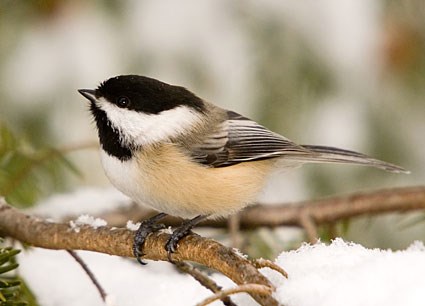
By Joe Phipps, Staff Writer
Illinois Wesleyan University puts a lot of effort into creating an environmentally friendly “green” campus. But why do the diverse trees and bountiful squirrels have to stop at the edge of campus?
Off-campus housing is widely available to upperclassman and gives students a freedom to customize their surroundings. The backyard of any off-campus living area has the potential to become a sanctuary to local wildlife with just a bit of determination and know-how.While many of us may spend our time at Wesleyan only noticing crows and squirrels, there is a wide variety of other animals that can be attracted to a yard.
Birds make great animals to observe due to their beautiful colors and interesting behavior, and it’s quite easy to attract a diverse number of birds to a location with just a few tools.
The most obvious way to attract previously unseen birds is through the use of food though common bird feeders, available in a variety of styles. Only three types of bird feeders are needed in order to attract the highest diversity of local birds to an off-campus home.
The first type is a hopper feeder, which may either be hung or set atop a pole. Hopper feeders use sunflower seeds that are allowed to flow out of the bottom into a collection area where birds such as cardinals, finches and jays can perch and feed.
The second is the suet feeder—suet feeders are often small metal cages that house a “suet block” that is high in fat and contains many types of nuts. These feeders are ideal for attracting woodpeckers, titmice, chickadees and nuthatches.
The final type of necessary feeder is the nyjer feeder, which is a mesh sack containing thistle seeds suited for goldfinches. Although the nyjer feeder may only attract goldfinches, the feeders are cheap, and the brilliant yellow and black of a goldfinch is worth the cost.
You can easily hang these feeders from trees or from special hanging poles, and all of these supplies are readily available from Wild Birds Unlimited located off College Ave in Normal.
A common setpiece in the “American yard” is the birdbath. Despite the fact that the traditional birdbath is not well suited for birds, an improvised birdbath can easily be constructed by taking a trashcan lid and filling the bottom with gravel.
Only requiring a change of water every other day, you can create a cheap birdbath that will be welcoming to many weary birds, but, because stray and outdoor cats are abundant in Bloomington, it’s important to place the improvised birdbath in an open space where predators can be easily spotted.
For those students who find feathery flocks frustrating, attracting rabbits and squirrels requires much less effort than keeping up several bird feeders. Wild Birds Unlimited has several squirrel feeders available ranging from interactive feeders that challenge the squirrels to think to the idyllic corncob-on-a-stick feeder.
Or, If this seems like too much effort for a few squirrels, you can also just nail a corncob to a tree. It’s just as effective.
Assuring that rabbits frequent the yard is also a task that requires little effort. The best start is to allow weeds to grow—rabbits thoroughly enjoy dandelions. Make sure that there are bushes for the rabbits to hide in as well as clumps of clover in the grass. This will make your yard the rabbits’ favorite foraging grounds.
Getting in touch with nature doesn’t have to mean travelling to dense forests or distant mountain ranges. Nature is anywhere that a bird lands or a plant grows, and it is wherever we allow it to be. By making a few changes in our surroundings, we can promote the concept of the backyard wilderness and feel good while doing it.
